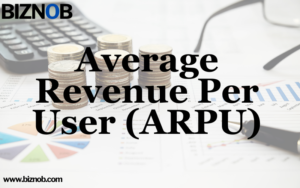What is Abenomics?
Shinzo Abe’s 2012 economic initiative, Abenomics, was implemented for the second time. Abenomics increased the money supply, government expenditure, and economic reforms to make Japan more competitive. The Economist described the initiative as a “mix of reflation, government spending, and a growth strategy designed to jolt the economy out of suspended animation that has gripped it for more than two decades.”
Understanding Abenomics
Like Reaganomics and Clintonomics, Abenomics refers to a politician’s economic policy. Abenomics was advocated to revive Japan’s economy from deflation and low growth. Japan’s economic problems began in the 1990s, the Lost Decade. Japan’s economy stagnated after a large real estate bubble burst in the 1980s and an asset price bubble in the early 1990s.
After the economic downturn, the Japanese government ran enormous budget deficits to support public works projects. In 1998, economist Paul Krugman wrote “Japan’s Trap” that Japan could raise inflation expectations by adopting an irresponsible monetary policy, which would lower long-term interest rates and boost spending to break economic stagnation.
Japan followed Krugman’s advice by increasing its money supply and lowering interest rates. This helped start an economic rebound in 2005 but did not halt deflation.
As Abe began his first term as prime minister in July 2006, Japan discontinued its zero-rate policy. Abe abruptly resigned as prime minister in 2007 but remained in the governing party. Japan failed to end deflation despite having the lowest interest rates. The Nikkei 225 fell almost 50% between 2007 and 2009. The Democratic Party of Japan defeated Abe’s Liberal Democratic Party (LDP) owing to Japan’s economic woes.
Abenomics and the Three Arrows
Abe started his second term in December 2012. After returning to government, he began Abenomics to boost Japan’s stagnating economy. After winning, Abe said he and his cabinet would “implement bold monetary policy, flexible fiscal policy and a growth strategy that encourages private investment, and with these three pillars, achieve results.”
The Abe program had three “arrows.” The first was printing 60 trillion to 70 trillion yen to boost Japanese exports and cause 2% inflation. Second, new government spending initiatives stimulated demand and consumption to boost short-term growth and long-term budget surpluses.
The third component of Abenomics was more complicated—regulatory change to boost Japanese industry and private sector investment. Among these initiatives were corporate governance reform, relaxing limits on recruiting foreign personnel in special economic zones, making it easier to remove inefficient workers, liberalizing the health sector, and helping local and international businesses. The bill also sought to modernize agriculture and reform the utilities and pharmaceutical sectors. According to economist Yoshizaki Tatsuhiko, the Trans-Pacific Partnership (TPP) might be the “linchpin of Abe’s economic revitalization strategy,” making Japan more competitive via free trade.
Did Abenomics Work?
Abenomics has functioned brilliantly, then stopped like other Japanese economic policies since the boom burst. Japan’s unemployment rate is more than 2% lower than when Abe took office again, and inflation objectives have been fulfilled. As has nominal GDP, corporate pre-tax earnings and tax revenues have also grown. Global economic forces have stalled Japan’s rise, and its biggest economic issue—an aging population—has taken center stage.
SUMMARY
- After taking office again in 2012, Japanese prime leader Shinzo Abe promoted Abenomics.
- Abenomics was initially a three-arrow method of raising the money supply, government spending to boost the economy, and economic and regulatory changes to make Japan more competitive globally.
- As prime minister Abe governs Japan, Abenomics now includes objectives for female employment, sustainable development, and Society 5.0, which aims to digitalize Japan.


































